Sorted by date Results 76 - 100 of 103
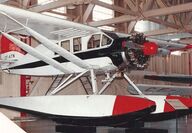
Known for its reliability, range, and cargo capacity, the Bellanca Pacemaker won the hearts of bush pilots and record setters. As an example, Russell Boardman and John Polando flew from Floyd Bennett Field to Istanbul in a Pacemaker called "Cape Cod" nonstop, a distance of 5,011 miles in 49 hours and 20 minutes between 28 and 30 July 1931. In the far north, Bellancas hauled fish, were used for aerial mapping, and mounted on floats and skies, provided mail service to remote Canadian and Alaskan... Full story
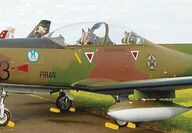
The Swiss firm Pilatus has designed and manufactured military training aircraft since the Argus engined P-2 of 1945. The 1953 P-3, with a Lycoming O-435, was developed into the PT6A powered PC-7, which was popular with many air forces from the late 1970's. The more refined and more powerful PC-9 first flew on 7 May 1984. With a 1150 hp Pratt & Whitney PT6A de-rated to 950 hp, it entered service with Australia, Switzerland, Saudi Arabia, and other Asian and Middle Eastern nations. Pilatus is... Full story
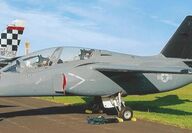
Designed as a basic trainer with light attack capabilities, the S. 211 first flew on 10 April 1981. Powered by a 2,500 pound thrust P&W of Canada turbofan, it has a maximum speed of 414 mph and a service ceiling of 40,000 feet. With four underwing hardpoints, it can carry a variety of bombs, rockets, and gun pods. Only three countries ordered the S. 211: Haiti (4), the Philippines (24), and Singapore (30). Over 60 percent of the airframe was made of composites. The two crew members sit in... Full story
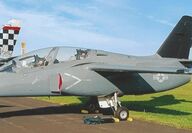
During World War II, the British relied on the United States for transports. Realizing they could be left behind after the war was over, the Barbazon Committee looked at setting requirements for post-war airliners. Some designs, like the huge Bristol Brabazon with eight Centaurus radials and the ten engine Saunders-Roe Princess flying boat, were colossal failures. Only two became serious trend setters. The graceful de Havilland Comet had to overcome some mysterious early crashes before proving... Full story
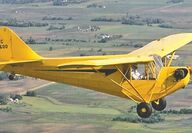
The Republic XF-91 falls into the category of mixed powered point defense interceptors that followed World War II inspired by German experiments with the rocket powered Messerschmitt Me-163B Komet and Bachem Natter. Designed to a December 1945 Army Air Force requirement for a bomber interceptor that would be supersonic and could climb to 47,500 feet in two and a half minutes, Republic's AP-31 design was ordered on 29 March 1946. It was to join the French Sud-Quest Trident and British... Full story
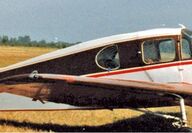
Giuseppe Bellanca came to New York from Sicily in 1911 with a degree in engineering. By 1914 he was running a flight school at Mineola, NY. One of his students went on to become a Caproni bomber pilot in WWI and later mayor of New York City. That student was Fiorello LaGuardia. Bellanca believed an aircraft's function was to transport people and payloads efficiently. His Columbia high wing monoplane set an endurance record of 51 hours and 11 minutes flown by Clarence Chamberlain and Bert Acosta... Full story
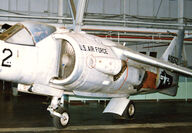
Hawker Siddeley Kestrel FGA. Mk. I (XV-6A) Evolved from the Hawker P.1127, which made successful use of the Bristol Siddeley Pegasus vectored thrust turbofan, the Kestrel paved the way for the V/STOL combat capable, and later battle tested in the 1982 Falklands War, Harrier, that remains in service with the USMC, Italy, India and Spain. Work began in 1958. The first free flight of P.1127 serial number XP831 took place on 19 November 1960. Another prototype and four development aircraft... Full story
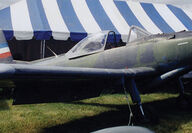
Prior to World War II, Yugoslavia manufactured a number of fighters and floatplanes, plus license manufactured the British Bristol Blenheim bomber and Hawker Hurricane fighter. After the war the aircraft industry's recovery took a number of years. Soko, formed in 1951, began with license manufacture of Westland Whirlwind and Gazelle helicopters. In 1957 it initiated work on the Galeb and Jastreb series of jet trainers and light attack aircraft. Then, in 1966, came the Kraguj, a single seat... Full story
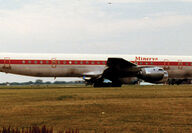
The Concorde was not the first airliner to exceed Mach 1.0. That honor goes to a Douglas DC-8-40 with Rolls Royce Conway engines that broke the sound barrier in a shallow dive on 21 August 1961. First flown at Long Beach on 30 May 1958 by A. G. Heimerdinger, the DC-8 was designed to replace the piston powered DC-6 and DC-7 and compete with Boeing's 707. Somewhat late to the market and without the benefit of military versions like Boeing's KC-135, only 556 DC-8's were built, compared to 856... Full story
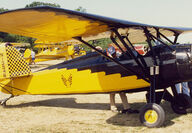
The Davis series of parasol wing monoplanes was built by former WWI pilotWalter C. Davis and the Davis Aircraft Corporation of Richmond, Indiana from 1929 to 1930. Power plants varied from the 60 or 85 hp LeBlond, through the 100 hp Kinner K-5, the 90 hp Lambert, to the 145 hp Warner Super Scarab model that is the subject of this Oshkosh 1988 photo. The Davis won Approved Type Certificate #256 on 8 November 1929, with the Warner version licensed under Group 2 Approval #394 on 21 December 1931.... Full story
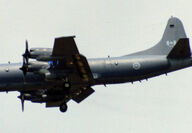
Designed to replace the Wright R-3350 Turbo-Compound powered Canadair CP-107 Argus (remember the May 2003 Mystery Plane?), which had replaced the wartime Avro Lancaster 10, the Lockheed CP-140 Aurora was ordered in July 1976. Wearing serials 140101 to 140118, the Aurora combined elements of the P-3C airframe with S-3A Viking electronics and search gear. With a crew of 11, the CP-140 was powered by four 4910 hp Allison T-56 turboprops. It is fitted out to handle antisubmarine, pollution patrol, s... Full story
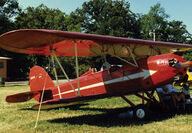
Known as the Bird, Brunner-Winkle Bird, and the Perth-Amboy Bird, this 1929 gem has a lot of history behind it. Luminaries such as Wiley Post, Lee Gehlbach, Clarence Chamberlain, and Milo Burcham all had Birds. The best known owner of a Bird Model BK was Charles Lindbergh who purchased one for $3500 in the fall of 1930 for his wife Anne. It was in NC727Y that she earned her pilot's license, passing her flight test on 29 May 1931. NC727Y still flies, now based in Maryland. Produced under Approved...
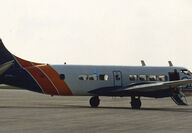
The de Havilland DH 114 Heron, which first flew at Hatfield on 10 May 1950, proved adaptable to stretching and engine changes. Initially powered by four de Havilland Gipsy Queens of 250 to 340 hp, it was later rebuilt with 260 and 340 hp Lycomings. The ultimate modification came in 1969 when Saunders Aircraft of Gimli, Manitoba, reconfigured a Heron Mk. II with a lengthened fuselage, a reengineered wing, and a pair of 715 hp P & W PT -6A turboprops. The fuselage stretch was eight feet six... Full story
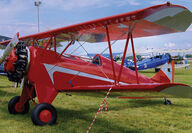
The Vintage Aircraft Association's "Round Engine Rodeo" in 2013 attracted a wide variety of beautiful and rare radial engined classics. Waco, Travel Air, Beech, Stinson, Stearman, Spartan, Grumman, de Havilland, Howard, Lockheed, Douglas - you name it, the great radial engined aircraft were represented. One unique biplane parked a little ways from Greg Herrick's Stinson trimotor that I was ground crew on, was the one of a kind Flaglor High Tow, a 220 hp Continental powered glider tug built by...
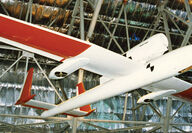
In this day of Predators, Reapers, Global Hawks, and other unmanned aerial vehicles, we forget that aircraft similar in concept have been trialed over the whole course of aviation's century plus evolution. The Boeing YQM-94A is one example. Ordered in 1971 by the U.S. Air Force Aeronautical System Division for high altitude, long RANGE unmanned recon, the YQM-94A and the Ryan YQM-98A, were meant to launch and recover from a fixed runway. Two prototypes of each were ordered. The YQM-94A was...
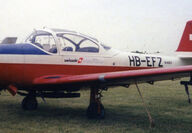
The famous Italian aircraft manufacturer Piaggio has existed in three forms. Begun in 1915 at Genoa by industrialist Rinaldo Piaggio, it built parts for Caproni bombers and Macchi flying boats during World War I. Then it specialized in multi-engined aircraft until the armistice in 1943. Re-formed in 1946, Piaggio built trainers, including the P-148 and P-149, for military use. It was restructured again in 1964. Derived from the two seat P-148 tail dragger that first flew in 1951, the... Full story
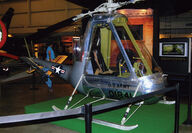
The American Helicopter Company was formed in 1947 and produced a small series of pulse jet rotor helicopters beginning with the A-5 "Top Sergeant" in January 1949. This was followed in 1950 by the A-6 "Buck Private." Neither design made it beyond the prototype stage. In 1951 the Army Transportation Corps joined the Air Force in calling for a one man, lightweight helicopter that could be airlifted and used for observation or rescue. In June 1951 a contract was awarded to the American Helicopter... Full story
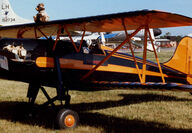
This month's winner Dave Gunderson of Mora wrote, "This little beauty is a Hannaford Bee-model D-1, completed in 1981 by homebuilder John Bright." Joe Connell of Stewartville wasn't fooled either, "I have a Kitfox and used to share a hangar at the Rochester Airport with John Hanson who built a Parakeet." Barry Taylor of Ottumwa, Iowa, called it, "One of my favorite airplanes." Graydon Carlson found the answer in a 1955-1956 issue of Air Progress magazine! Did you note the two different spellings...
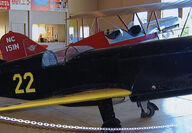
In the years before the Second World War, air racing was the catalyst for improvements in engines, fuels, lubricants, streamlining, and structure. Part of that development encompassed the famous Menasco powered racers of the 1930s. An air cooled, inverted, four or six cylinder inline engine, ranging from the 90 hp Pirate to the souped up 315 hp Buccaneer, they powered racers built by Bennie Howard, Clayton Folkerts, Lawrence Brown, Art Chester, and Keith Rider. Herschel Smith in A History of... Full story
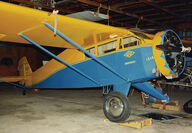
Praised by Lady Mary Heath, Britain's "Lady Lindy" in a February 1929 issue of Aviation magazine for its "ease of handling and balance of the controls," the Aristocrat was a product of General Airplanes Corporation of Buffalo, NY. Powered by a 110 hp Warner Scarab seven cylinder radial, it appeared at the 1929 Cleveland Air Show. Eight were purchased by the General Tire and Rubber Company for its 50,000 mile, four month US tour in late 1929 and one, registered X7511, was donated to polar... Full story
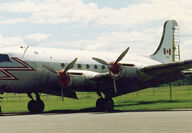
Before the end of WWII, Trans-Canada Air Lines foresaw the need for a domestically produced airliner. After considering the Douglas and Lockheed products, the decision was made to adapt the DC-4 with 1760 hp Rolls Royce Merlin 620 engines and a pressurized fuselage. The RCAF also expressed interest, but without the pressure cabin. After the war, Canadair brought C-54 tooling and components from Douglas's Chicago plant. Initial DC-4M and C-54GM production used many Douglas built parts. The... Full story
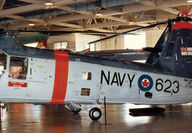
Frank Piasecki founded PV Engineering in 1941. His experimental PV-2 helicopter appeared in April 1943, followed by NACA awarding him Helicopter Pilot Certificate No. 1. The H-21 (the May 2011 Mystery Plane) was followed by the PV-14, which led to the Navy's HUP "Retriever" and the Army's H-25 "Army Mule." Powered by a 550 hp R-975 radial engine, the HUP had a maximum speed of 108 mph and a range of 360 miles. Its useful load with two pilots, was 1650 pounds, four to seven passengers or three...
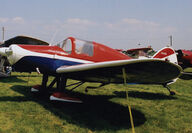
"No other light airplane combines all the features that aviation-minded enthusiasts demand," reads a 1947 advertisement for the Applegate & Weyant version of Al Mooney's classic Dart. Powered by a 100 hp Continental flat six, the Dart GC (C for Continental) was a worthy successor to the earlier Dart G (90 hp Lambert), Dart GK (90 hp Ken Royce), or Dart GW (90 hp Warner Scarab Junior) radial engined models produced by Lambert, Culver and Dart. Ten Dart GC's, licensed under Approved Type Certifica...
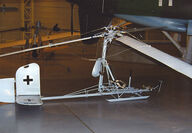
In 1933, Professor Heinrich Focke resigned as Technical Director of Focke-Wulf to purse his interest in rotary winged aircraft. Beginning by license building Don Juan de la Cierva's C.19 autogyro, he worked with aerobatic pilot Gerd Achgelis toward perfecting a practical helicopter. His Fa-223 Drache was one of the few helicopters, along with the Flettner Fl-282 Kolibri and the Sikorski R-4, to see WWII service. In early 1942, the Kriegsmarine asked Focke-Achgelis to design a gyro kite to be...
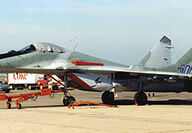
The design team of Artyom Mikoyan and Mikhail Guryevich was formed in December 1939 to produce fighters for the Red Air Force. The wartime MiG-3 was fast, but a handful to fly. Post war, the team collaborated on the first Soviet jet, the MiG-9, and followed this with the Korean War MiG-15 and the Viet Nam War MiG-17 and MiG-21. Guryevich retired in 1964 and Mikoyan died in 1970. Designed to replace the MiG-21, MiG-23 and Su-17 with the Soviet Air Forces' Frontal Aviation, the prototype MiG-29... Full story